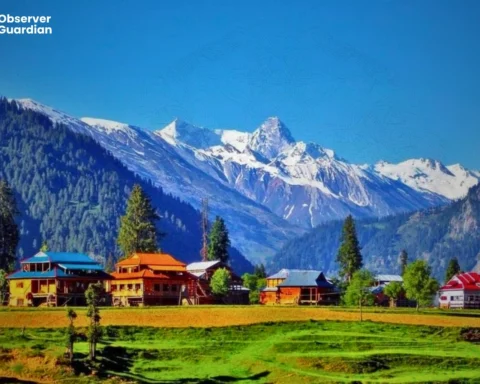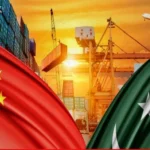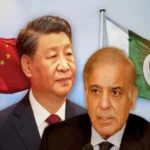China has decided to rename 27 new locations in Arunachal Pradesh – the region bordering China and India. The recent renaming will increase the number to 89. Strategic experts see this move as not just a cartographic exercise, but a political signal aimed at giving a stringent message to India. The renaming of regions is aimed at promoting China’s historical claim over the region of South Tibet. India, on the other hand, views China’s claim as a persistent challenge to its territorial integrity. The cartographic exercise symbolizes China’s confidence in the unilateral promotion of its commercial interests. This approach manifests the deep-rooted mistrust that persists between India and China. India, on the other hand, appears to maintain a diplomatic composure and balance at the strategic level. However, China’s coercive posturing paints an altogether different story. The crisis of cartography depicts the increasing gap between the foreign policy approach of India and the strategic outcome of India’s foreign policy on the ground. The repeated renaming of bordering regions manifests China’s territorial ambitions and the hollowness of India’s foreign policy.
Strategic Messaging
This is not the first time China has renamed regions in Arunachal Pradesh. Many believe that the mass scale of this cartographic exercise and the timing illustrate a new approach in China’s foreign policy. For them, this might be the latest move by China to assert diplomatic pressure on India. Every latest addition to the list of new names symbolically reasserts China’s claim on India-controlled territories, which directly undermines India’s narrative about its sovereignty. In international affairs, such an approach is viewed as a move to slightly shift the status quo without triggering conflict. This whole exercise also proves that in modern geopolitics, maps are not mere navigational tools; instead, they are the very instrument of statecraft.
Timing and the Fragility
The timing of this move makes China’s cartographic initiatives strategic in outlook. China renames the regions often after a large period of calm or right after an important geopolitical shift. This move came right after the visits of important Indian leaders to China. The sequencing or calculated maneuvering shows that China makes the unilateral move irrespective of diplomatic gestures or important visits. The repeated renaming exposes the persistent vulnerabilities of India’s foreign policy. Until now, it remains clear that India has failed to convert its diplomacy into deterrence.
The Diplomatic Thaw
Indian foreign policy experts and academicians view a thaw in the bilateral relations of India and China, especially after the border commanders’ meeting. They believe that such meetings play a proactive role in preventing an all-out border conflict. Compared to this, the actions initiated by Beijing on the Line of Actual Control (LAC) suggest that Indian authorities have been pursuing unnecessary optimism. Thus, the repeated actions of China contrast with the Indian optimism, which is somehow a failure of the diplomatic narrative being pursued by India. Since the actions of both China and India remain contradictory, these actions might prove strategically inflated.
The Mounting Pressures
This cartographic exercise has not just global implications, rather it leaves an impact on the domestic level as well. Indian Foreign Minister and his team have faced severe criticism as many experts in the Indian strategic circles hold the view that repeated summits and meetings have not yielded any positive impact in terms of foreign policy gains. Similarly, Parliamentarians in the Lok Sabha criticize the government for failing to achieve any tangible outcome. Opposition Parliamentarians question the External Affairs Ministry (EAM) as they view that PM Modi’s government remains in a disadvantageous position when it comes to positioning India as a regional power. China’s moves have provided ammunition to Indian critics that further erodes the domestic standing of the EAM.
China-Pakistan Axis: A Dual Challenge
The strategic partnership that persists between China and Pakistan is yet another challenge for India. China’s support for Pakistan in the post-Pahalgam crisis signifies that China stands ready to support Pakistan against the strategic miscalculations of India. This solidarity for Pakistan multiplies New Delhi’s challenges, since the latter admits that it cannot endure protracted conflict with Pakistan. Despite India’s objectives of isolating Pakistan diplomatically and projecting itself as the rising giant, the increasing Beijing-Islamabad partnership indicates that everything is not achievable for India, especially when it comes to asserting its posture in South Asia. This partnership between India’s two arch rivals is believed to be a major lapse in the strategic foresight of India.
The Cautions of Strategic Experts
India’s foreign policy experts and academicians increasingly believe that India’s foreign policy lacks clear direction when it comes to dealing with regional rivals. This criticism has increased in recent times as the majority of them accept that their view has proved right in the latest Indo-Pakistan standoff. They call for a stringent deterrent matrix that must have the ability to deter both Pakistan and China. The post-Pahalgam situation and the latest cartographic exercise have made it clear that India failed to uphold its policy of economic engagement with China and containment of Pakistan. Rather than creating an array between Beijing and Islamabad, New Delhi’s strategic miscalculations have brought the two countries closer.
China’s Expansionist Approach
China’s latest cartographic move is not an isolated exercise; instead, it aligns with the broader pattern of expansion that China has been pursuing for decades. As for now, China has direct and indirect stakes in nearly 176 sea ports of the world. Also, China maintains bases in the Indian Ocean that provide China with a strategic edge compared to other regional powers. On the economic front, China appears to be consolidating its Belt and Road gains deep in South Asia. This approach of expanding the strategic designs, coupled with a staunch military stance, shows that Beijing’s non-expansionist approach is just a smokescreen. The renaming of areas that are under Indian control underpins the agenda of expansion under the façade of revisionism.
Final Thought: Missing Moves, Missing Opportunities
China’s economic expansion in the form of BRI and strategic expansion in the form of cartographic maneuvers forecasts an increasing challenge for India. The renaming is not merely symbolic; instead, it is a strategic warfare waged by China. Presently, in the war of maps, cartography, forging alliances, and symbolism, India appears to be losing. The argument stands justified that repeated renaming of bordering regions manifests China’s territorial ambitions and the hollowness of India’s foreign policy. In the absence of a recalibrated foreign policy that stands on both military firmness and effective narrativization, India will further risk its strategic pursuit. In present-day geopolitics, perception is the real gain, where China seems to be heading, and India seems to be merely reacting.







